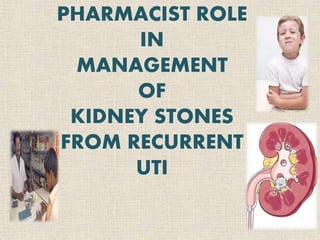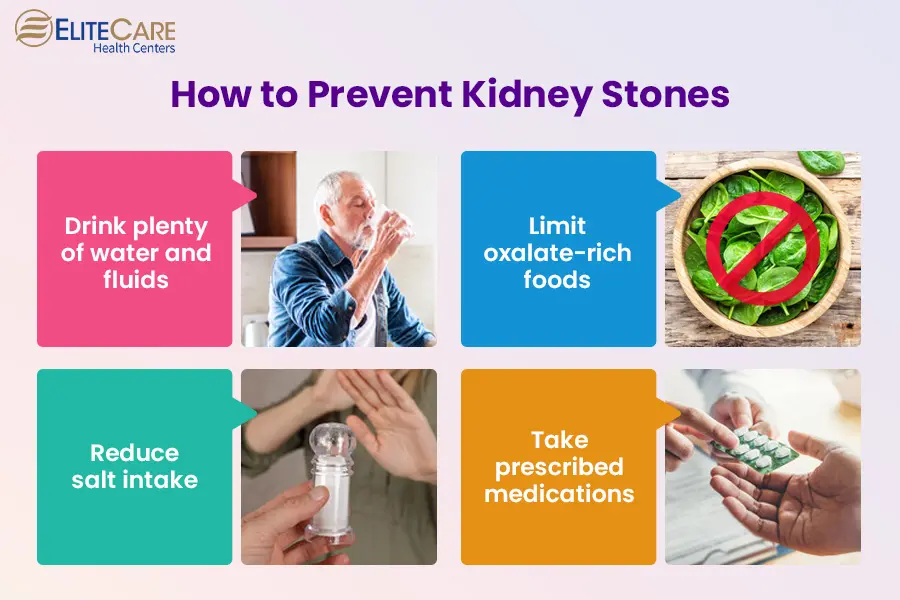An Extensive Evaluation of Treatment Alternatives for Kidney Stones Versus Urinary System System Infections: What You Required to Know
While UTIs are commonly resolved with antibiotics that provide fast alleviation, the approach to kidney stones can vary substantially based on private factors such as stone size and structure. Non-invasive approaches like extracorporeal shock wave lithotripsy (ESWL) might be appropriate for smaller stones, yet bigger or obstructive stones frequently need more intrusive strategies.
Recognizing Kidney stones
Kidney stones are hard down payments formed in the kidneys from salts and minerals, and comprehending their structure and formation is essential for effective monitoring. The main sorts of kidney stones consist of calcium oxalate, calcium phosphate, struvite, uric acid, and cystine stones, each with unique biochemical beginnings. Calcium oxalate stones are one of the most usual, normally arising from high degrees of calcium and oxalate in the pee. Elements such as dehydration, nutritional habits, and metabolic problems can add to their development.
The formation of kidney stones occurs when the focus of particular compounds in the pee enhances, resulting in condensation. This condensation can be affected by urinary pH, volume, and the existence of preventions or promoters of stone formation. Low urine volume and high acidity are favorable to uric acid stone advancement.
Recognizing these elements is crucial for both avoidance and therapy (Kidney Stones vs UTI). Reliable monitoring strategies may include nutritional alterations, enhanced fluid intake, and, in many cases, pharmacological treatments. By recognizing the underlying causes and kinds of kidney stones, medical care service providers can implement tailored strategies to minimize reappearance and improve patient end results
Summary of Urinary System Infections
Urinary system infections (UTIs) prevail bacterial infections that can impact any component of the urinary system, including the kidneys, ureters, bladder, and urethra. Most of UTIs are triggered by Escherichia coli (E. coli), a type of bacteria usually discovered in the intestinal tracts. Women are extra vulnerable to UTIs than males as a result of anatomical differences, with a shorter urethra helping with simpler microbial access to the bladder.
Symptoms of UTIs can vary depending on the infection's area yet often include constant urination, a burning feeling during peeing, over cast or strong-smelling pee, and pelvic pain. In more severe situations, specifically when the kidneys are involved, signs might also include fever, chills, and flank discomfort.
Threat aspects for developing UTIs include sex-related task, certain sorts of birth control, urinary tract problems, and a damaged body immune system. Diagnosis commonly entails pee examinations to identify the presence of bacteria and various other indications of infection. Motivate therapy is necessary to stop problems, including kidney damage, and typically entails anti-biotics customized to the details bacteria included. UTIs, while common, need timely recognition and administration here to make sure reliable outcomes.
Therapy Options for Kidney stones

If the stones are larger or trigger considerable discomfort, non-invasive treatments such as extracorporeal shock wave lithotripsy her comment is here (ESWL) might be utilized. This technique utilizes sound waves to break the stones right into smaller fragments that can be a lot more easily gone through the urinary tract.
In cases where stones are as well large for ESWL or if they block the urinary system system, ureteroscopy may be shown. This minimally invasive treatment involves using a tiny extent to eliminate or break up the stones directly.

Treatment Options for UTIs
Exactly how can doctor effectively address urinary tract infections (UTIs)? The main strategy entails a comprehensive assessment of the individual's signs and symptoms and clinical history, complied with by ideal diagnostic testing, such as urinalysis and pee culture. These tests help determine the causative pathogens and identify their antibiotic vulnerability, guiding targeted treatment.
First-line treatment typically includes anti-biotics, with choices such as nitrofurantoin or trimethoprim-sulfamethoxazole, relying on local resistance patterns. For uncomplicated instances, a brief training course of prescription antibiotics (3-7 days) is frequently enough. In frequent UTIs, carriers might think about preventative antibiotics or different methods, including way of living alterations to reduce risk factors.
For people with difficult UTIs or those with underlying health problems, extra hostile treatment might be required, potentially including intravenous anti-biotics and further diagnostic imaging to assess for complications. Furthermore, patient education and learning on hydration, health practices, and signs and symptom administration plays a vital role in avoidance and reappearance.
Comparing Results and Efficiency
Examining the outcomes and efficiency of treatment options for urinary system system infections (UTIs) is crucial for optimizing patient treatment. The key treatment for uncomplicated UTIs usually includes antibiotic therapy, with options such as trimethoprim-sulfamethoxazole, nitrofurantoin, and fosfomycin. Studies suggest high effectiveness rates, with many patients experiencing symptom alleviation within 48 to 72 hours. However, antibiotic resistance is an expanding issue, necessitating mindful option of antibiotics based upon local resistance patterns.
On the other hand, treatment results for kidney stones vary significantly based upon stone structure, location, and dimension. Options vary from traditional monitoring, such as hydration and discomfort control, to interventional treatments like extracorporeal shock wave lithotripsy (ESWL) and ureteroscopy. While ESWL has a high success rate for smaller stones, complications can develop, necessitating more interventions.
Eventually, the effectiveness of treatments for both conditions rests on precise site link diagnosis and tailored approaches. While UTIs normally respond well to prescription antibiotics, kidney stone administration may call for a multifaceted approach. Continual analysis of therapy end results is essential to boost client experiences and minimize reappearance prices for both UTIs and kidney stones.
Verdict
In recap, therapy approaches for kidney stones and urinary tract infections vary significantly due to the distinct nature of each problem. Non-invasive methods such as extracorporeal shock wave lithotripsy are appropriate for smaller stones, whereas bigger or obstructive stones might need ureteroscopy.
While UTIs are normally resolved with antibiotics that supply fast relief, the strategy to kidney stones can differ dramatically based on specific aspects such as stone size and composition. Non-invasive approaches like extracorporeal shock wave lithotripsy (ESWL) might be ideal for smaller stones, yet bigger or obstructive stones typically call for more invasive strategies. The main kinds of kidney stones include calcium oxalate, calcium phosphate, struvite, uric acid, and cystine stones, each with distinctive biochemical beginnings.In contrast, therapy end results for kidney stones differ significantly based on stone area, dimension, and make-up. Non-invasive methods such as extracorporeal shock wave lithotripsy are appropriate for smaller sized stones, whereas larger or obstructive stones might call for ureteroscopy.